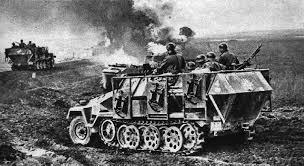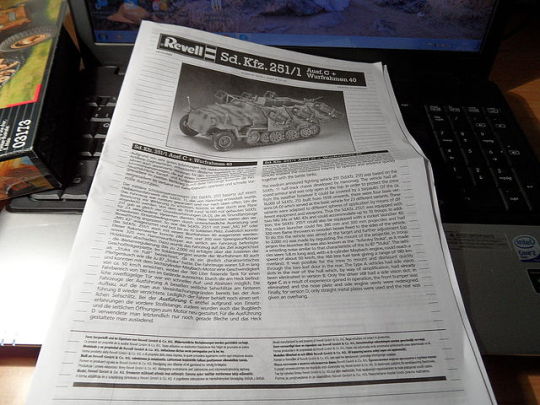#renault UE chenillette
Text

#today on posts that ate funny only to op#but like seriously tell me if you want me to explain#tks-d#pak-36#renault UE chenillette#history meme
2 notes
·
View notes
Text

French Renault UE Chenillette tractor armed with a German MG 15 aircraft machine gun captured by US forces in France in 1944
69 notes
·
View notes
Photo

February 2, 1940, a French armored unit stands for review during its commissioning ceremony on the outskirts of Paris. These French tankers are standing beside their Renault UE Chenillette tankettes, which were manufactured from 1932 to 1940.
6 notes
·
View notes
Photo

Déchargement d'une chenillette Renault UE d'un avion de transport militaire Messerschmitt Me 323 Gigant – Tunisie – janvier 1943
Photographe : Helmuth Pirath
©Bundesarchiv - Bild 101I-554-0872-07
#WWII#Campagne d'Afrique du Nord#Campagne de Tunisie#Aviation militaire#Avion de transport#Messerschmitt Me 323 Gigant#Me 323#Chenillette#Chenillette Renault UE#Tunisie#01/1943#1943
21 notes
·
View notes
Photo

February 2, 1940, a French armored unit stands for review during its commissioning ceremony on the outskirts of Paris. These French tankers are standing beside their Renault UE Chenillette tankettes, which were manufactured from 1932 to 1940. [1651 x 995] Check this blog!
9 notes
·
View notes
Photo

Sd. Kfz. 251/1 Ausf.C + Wurfrahmen 40 - 1:72 scale - Histórico
Breve Histórico
O Wurfrahmen 40 foi um veículo meia lagarta, construído a partir do chassi de um caminhão normal com lançadores de foguetes na Segunda Guerra Mundial. Era combinado a partir de um veículo Sd.Kfz. 251 halftrack ou capturado ex-Renault UE Chenillette francês com artilharia de foguete para formar uma peça de artilharia mais móvel e protegida do que o Nebelwerfer rebocado. Foi apelidado de Stuka zu Fuss ("Stuka a pé" ou "Walking Stuka") e Heulende Kuh (vaca que grita).

Sd.Kfz.251 Original
Veículo uma grande capacidade de mobilidade. Geralmente, possuía uma ou duas metralhadoras de saturação Machinengewehr MG 34 montada no teto, sendo que alguns veículos, em especial nas Ardenas, também foram equipados com um canhão antiblindagem PzB 41.

Introduzido no final de 1940, o sistema de armas era uma estrutura com placas de base ajustáveis montadas sobre e ao lado de um veículo que podia conter foguetes explosivos com altura de 300 mm (HE); Também foram utilizados foguetes incendiários de 280 mm HE e 320 mm, sendo os foguetes disparados enquanto estavam em suas caixas de carregamento. Embora tenham estabilizado a rotação, os foguetes não eram tão precisos quanto a artilharia convencional e a recarga consumia muito tempo devido ao peso do foguete. Os foguetes eram disparados em grande número, onde era possível saturar rapidamente um alvo. O Wurfrahmen 40 foi bem-sucedido em servir como arma de suporte para as formações móveis de Panzers, principalmente em áreas urbanas.

Lançando as Bombas
Foi utilizada uma estrutura com seis placas de base, com três de cada lado. O Chenillette UE empregava dois quadros por lado ou quatro quadros na parte traseira. A montagem dos Hotchkiss H35 também utilizavam duas de cada lado. Alguns M3 americanos capturados também foram montados com o Wurfrahmen, com quatro quadros, sendo dois em cada lado. Utilizado pelo alemães em muitos teatros de operações!


-.-.-.-.-.-.-.-.-
O Kit
Revell

Manual



Sprue


Decais

Kit bastante simples, porém com as lagartas step by step, mas bastante razoável para montar.
No próximo post as fotos das etapas finais do trabalho!
Forte Abraço
Osmarjun
1 note
·
View note
Photo

German Rocket Launcher Sd.Kfz.251/2 Ausf.D w/Wurfrahmen40 mounted on SD.Kfz. 251/1-II) firing on Warsaw's old town in September 1944. The Wurfrahmen 40 ("launch frame 40") was a German World War II multiple rocket launcher. It combined a vehicle such as the SdKfz 251 halftrack or captured ex-French Renault UE Chenillette with rocket artillery to form a more mobile and protected artillery piece than the towed Nebelwerfer. It was nicknamed Stuka zu Fuss ("Stuka on Foot" or "Walking Stuka") and Heulende Kuh ("Bellowing Cow").[1]
Wurfrahmen mounted on Sdkfz 251 Introduced in late 1940, the weapon system was a framework with adjustable base plates fitted over and alongside a vehicle which could hold 300 mm high explosive rockets; 280 mm HE and 320 mm incendiary rockets were also used, the rockets being fired while in their loading crates. Although spin stabilized, the rockets were not as accurate as conventional artillery and reloading was time consuming due to the rocket's weight. Rockets were ripple-fired in large numbers where feasible to quickly saturate a target. The Wurfrahmen 40 was successful in service as a support weapon for the mobile Panzer formations, particularly in urban areas.
When used on the common mounting, the Sd.Kfz. 251 halftrack, a frame with six base plates were used, with three on each side. The Chenillette UE employed either two per side or four frames on the rear. The Hotchkiss H35 mounting used two per side also. Some captured American M3 halftracks also mounted Wurfrahmen, with four frames at two per side.
6 notes
·
View notes
Text
http://chert-poberi.ru/wp-content/uploads/proga2018/images/201808/igor5-18081814125612.jpg
Немецкий самолет-гигант Messerschmitt 323, который мог «проглотить» целый танк
Трофейная французская танкетка Renault UE Chenillette выезжает задним ходом «из нутра» гигантского самолета Messerschmitt Me 323. Тунис, январь 1943 года. |
0 notes